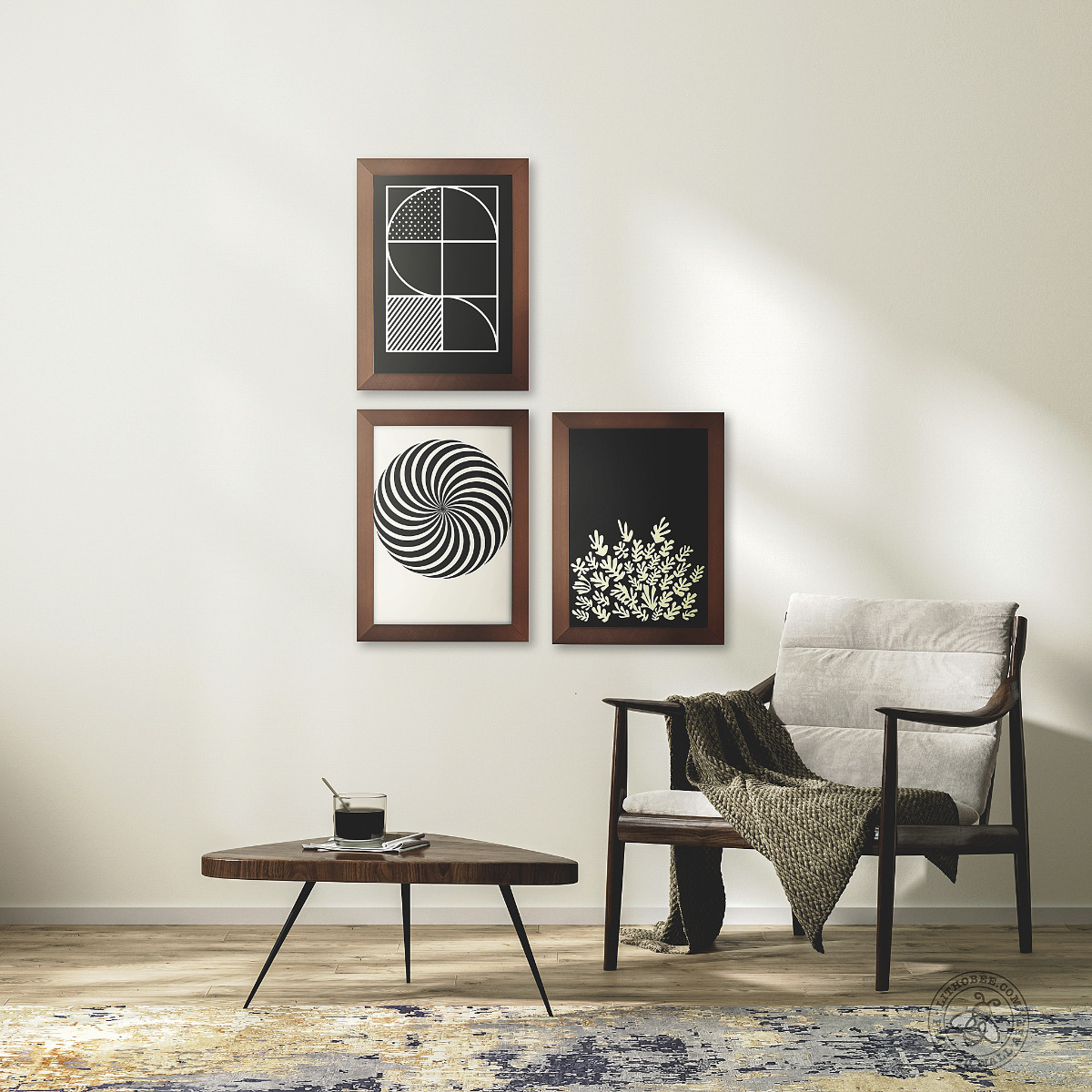Despite the nebulous nature of our era and the new forms of artistic style and expression birthed by digital creativity, we still make our art physical in order to beautify our spaces. Not yet have we technologically evolved our way out of a need for a frame. Something to hold our art and display it on our walls, something to protect it from the wear and tear of daily life.

The act of hanging art is almost as old as art itself. We have art pieces featuring ornamental borders from as far back as 2,000 BC, although the wooden frame as we know it today was not seen until the 11th century, some 3,000 years later. The history of how we display and protect our art is not just about the progression of style, techniques, and materials, but is part of a conversation about how we feel towards art and expression across time, space, and culture
Before the Frame
Although we have few surviving examples and little information on ornamental bordering we do know that the decoration of basic, functional objects and the creation of figurative artwork dates back to the neolithic period. Since the dawn of our collective memory art has existed as cave paintings, beads, and figurines. While not framed in the modern sense, even these early iterations of art featured decorative elements we can interpret as precursors to ornamental borders, the seed of an idea which would eventually grow into the frame.
From what evidence we do have of relics from these prehistoric eras, we can infer that the use of decorative elements and embellishment is an ancient practice.
The First Frames
One of the first frames ever documented was found in an Egyptian tomb, the wooden frame containing a portrait is dated to be nearly 2,000 years old, coming from 50-70 AD when Egypt was an imperial province of Rome.
The genesis of the modern carved wooden frame can be traced back to the 11th century. These prototype frames were essentially raised edges protecting painted wooden altars, this pictorial surface gradually evolved into framed paintings atop the altar.
Early Beginnings and the Renaissance Shift
During the 14th and 15th centuries, most European picture frames were immobile, integrated with the architecture, and made to reflect the grandeur of location as most of these frames would have only existed in churches, cathedrals, and palaces.
However, as the Italian Renaissance dawned, there was a shift towards movable frames. Influenced by wealthy patrons like the Medici family, who began commissioning personal artworks through the church. The introduction of independent frames allowed for more versatility in displaying art within homes and estates, marking a significant departure from earlier integrated frames.
The Salon Era and Victorian Innovation
The 17th century saw the advent of the salon-style hang, particularly in places like the French Royal Academy of Painting and Sculpture. This style involved hanging paintings of various sizes closely together in a tableau, often reaching from floor to ceiling. Picture hooks made of metal or wood, along with picture rails, were crucial to this style. These rails could bear substantial weight and allowed frames to be moved easily, which was essential for the densely packed salon displays. By the 19th century, this method had become popular in middle-class homes, particularly in the Victorian era, where picture rails were a common feature.
The Modernist Grid and Minimalist Approaches

The late 19th and 20th centuries, marked by the second Industrial Revolution, brought about new approaches to art display. The modernist grid, inspired by advances in printing and media, introduced a more structured and ordered way of hanging art, with equal spacing between each artwork, creating a uniform display. This style was adopted by movements such as De Stijl. Mid-century Minimalist art movements further revolutionized art hanging, emphasizing simplicity and precision. Minimalists preferred artworks to be hung flush to the wall, often in a grid formation, without additional framing or visible hardware. During this time, French cleats and drywall hooks emerged as popular hanging materials, with the latter becoming a staple in DIY home repair methods.
Intuitive Hanging
The late 20th century sees the emergence of the New Age movement, which draws on non-Western spiritual beliefs and practices. This movement influences art hanging, where the content and placement of artwork aims to create a harmonious connection with the viewer. The choice of hardware and materials, like natural brass or copper, believed to have positive energy properties, and the use of wooden frames reflected this shift. The New Age approach to art display is more intuitive, often favoring non-linear and symbolic placements.
The art of picture frame hanging is a fascinating blend of history, aesthetics, and practicality. From its origins in the 11th century with the first publicly available wooden frames to the diverse hanging methods developed over centuries, this practice reflects our enduring desire to showcase and cherish art. Today, as we apply modern techniques and tips to enhance our own experiences of hanging frames, we are participating in a rich tradition that has decorated and enlivened human spaces for generations. This journey from the past to present not only enriches our appreciation of art but also connects us to a timeless human endeavor—transforming our living spaces into galleries of personal expression and beauty.



